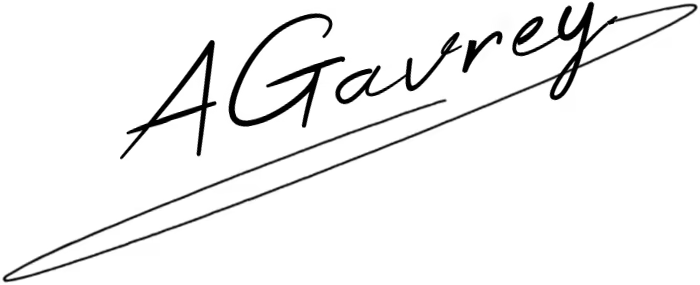What Is Form 1099-QA?
Form 1099-QA is a specialized tax document used in the United States for reporting distributions from Achieving a Better Life Experience (ABLE) accounts. These accounts are designed to help individuals with disabilities and their families save for disability-related expenses without affecting their eligibility for government assistance programs. The form is issued by the financial institution managing the ABLE account and must be provided both to the account beneficiary and to the IRS.
The form is required for every year in which a distribution occurs from the ABLE account, regardless of whether the distribution is taxable or not. ABLE accounts were established under the Stephen Beck Jr., Achieving a Better Life Experience Act of 2014, and Form 1099-QA plays a critical role in ensuring the proper reporting and usage of these tax-advantaged savings accounts. The form contains essential information such as the gross distribution amount, earnings portion, and basis.
It’s essential to understand that Form 1099-QA differs from other 1099 forms like 1099-MISC or 1099-INT. While other forms report miscellaneous income or interest, 1099-QA is specifically tied to ABLE accounts. As such, knowing when to expect this form and how to report it correctly on your tax return can save you from complications and potential audits. The form ensures compliance with IRS regulations while providing transparency on how ABLE funds are being used.
Who Should Receive and File Form 1099-QA?
Any ABLE account beneficiary who receives a distribution during the calendar year should expect to receive Form 1099-QA from their plan administrator. The form is also furnished to the IRS. In most cases, the ABLE account owner and the beneficiary are the same person, but in some cases—such as a parent managing an account for a minor—the form may be mailed to the custodian or guardian.
The IRS mandates that financial institutions or program administrators send out the 1099-QA forms by January 31 of the year following the distribution. For example, if distributions were made in 2024, the recipient should receive Form 1099-QA no later than January 31, 2025. If you’ve made no distributions during the tax year, you will not receive this form.
Form 1099-QA must be reported on your federal income tax return, specifically on Form 1040. The taxable portion of any ABLE distribution, which consists of earnings not used for qualified disability expenses, must be included in your gross income. Note that using ABLE distributions for non-qualified expenses may result in both income tax liability and a 10% additional tax on the earnings portion.
How to Fill Out Form 1099-QA
Though recipients do not fill out Form 1099-QA themselves, understanding its layout is essential. The form is divided into several numbered boxes, each representing a different financial detail related to the ABLE distribution. Knowing how to read and interpret these sections is important for accurate tax reporting. Errors in interpreting the form can result in discrepancies on your tax return.
Below is a breakdown of what each box in the 1099-QA represents:
| Box Number | Description |
|---|---|
| 1 | Gross distribution — Total amount taken out of the ABLE account in the calendar year. |
| 2 | Earnings — Part of the distribution representing investment gains. |
| 3 | Basis — Amount of the distribution representing original contributions. |
| 4 | Program-to-program transfer — Checked if the funds were moved from one ABLE account to another. |
| 5 | Account termination — Checked if the ABLE account was terminated during the year. |
Ensure that the amounts in Boxes 2 and 3 add up to the amount in Box 1. If they do not, you should contact the plan administrator for clarification. The earnings portion (Box 2) is the part subject to potential tax if used for non-qualified expenses, while the basis (Box 3) generally is not taxable.
You do not send Form 1099-QA with your tax return. Instead, use it to help fill out the appropriate parts of your Form 1040. It’s highly recommended to retain the form for at least three years in case the IRS requests documentation later.
Instructions for Using the 1099-QA on Your Tax Return
After receiving the 1099-QA, you’ll need to determine whether the distributions were used for qualified disability expenses (QDEs). If all distributions were used for QDEs, the earnings portion will not be taxed, and you will not owe any additional taxes or penalties. If any part of the distribution was used for non-qualified expenses, then you must report the taxable portion.
Use Form 1040, and include the taxable portion of the earnings under “Other Income.” You may also need to attach Form 5329 if the 10% penalty applies. To determine how much, if any, is taxable, calculate the earnings ratio:
- The total earnings (Box 2) divided by the gross distribution (Box 1).
- Multiply this ratio by the amount of the distribution used for non-qualified expenses.
- This is the taxable portion to report.
If you’ve rolled over funds to another ABLE account or terminated the account, ensure Boxes 4 and 5 are checked correctly. The IRS uses this information to track rollovers and ensure account holders do not exceed the annual contribution limit of $18,000 (as of 2025).
Failure to report accurately could result in an IRS notice or penalty. It’s best to consult a tax professional if you're unsure, especially if you’ve had complex distributions or mixed use of ABLE funds.
Common Mistakes and How to Avoid Them
A significant number of issues with Form 1099-QA arise due to misinterpretation or neglect. One of the most common mistakes is assuming that all distributions are non-taxable. While ABLE accounts do offer tax advantages, these only apply when funds are used for QDEs. Expenses like housing, food, and travel may not always qualify unless directly related to the individual’s disability.
Another common mistake is failing to reconcile the form with one’s tax return. If the IRS receives a 1099-QA showing distributions and the taxpayer fails to report them, it may trigger an audit. Likewise, mismatched totals between Form 1099-QA and Form 1040 can result in delays in processing the return.
- Always double-check Box totals against your withdrawal records.
- Keep documentation for each expense paid with ABLE funds.
- Consult IRS Publication 907 for a detailed list of QDEs.
- Verify rollover transactions and ensure they are marked accordingly.
- Use software or professional help to ensure correct entry on your Form 1040.
Lastly, make sure your address is up-to-date with your ABLE program administrator. If the 1099-QA is mailed to an old address, you may miss the filing deadline or face last-minute complications. Also, keep in mind that some states have their own ABLE programs and tax incentives, so state-level rules may also apply.
Conclusion: Importance, Timing, and Accuracy of the 1099-QA
In summary, Form 1099-QA is an integral part of managing an ABLE account responsibly. The form allows the IRS to verify that ABLE distributions are used in compliance with federal tax rules and to ensure that the account remains a valuable tool for individuals with disabilities. As of 2025, over 130,000 ABLE accounts have been opened nationwide, with more than $1.4 billion in assets.
Form 1099-QA must be issued by January 31 of the year following any distributions and should be used to report any taxable portions of those distributions on Form 1040. Distributions used for qualified disability expenses remain tax-free, while non-qualified expenses may result in tax liabilities and penalties. Reporting errors can lead to issues with the IRS, which makes accuracy and attention to detail critical.
To ensure compliance, remember the following abbreviations: QDE (Qualified Disability Expense), ABLE (Achieving a Better Life Experience), IRS (Internal Revenue Service), and SSDI (Social Security Disability Insurance). Staying informed about annual contribution limits (currently $18,000) and maintaining good records will help keep your ABLE account in good standing. When in doubt, consult tax professionals or IRS resources to stay compliant and maximize your benefits.
Evaluation of IQTaxHub
Pros
- Accurately reports 1099-QA ABLE distributions
- Simplifies tax filing for ABLE funds
- Ensures IRS compliance for disability savings
Cons
- Taxable earnings possible on nonqualified withdrawals
- Requires strict tracking of expense usage
- May lead to tax errors if misapplied

Last modified: April 18, 2025 at 5:43 a.m.

